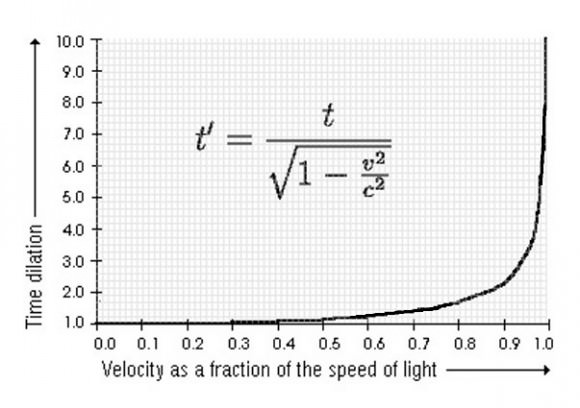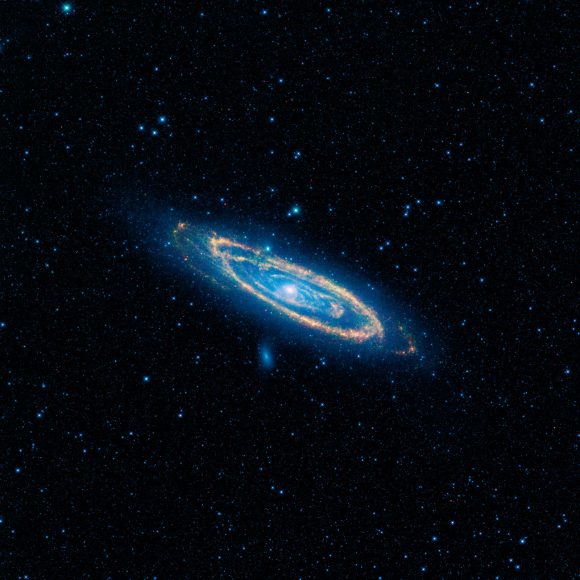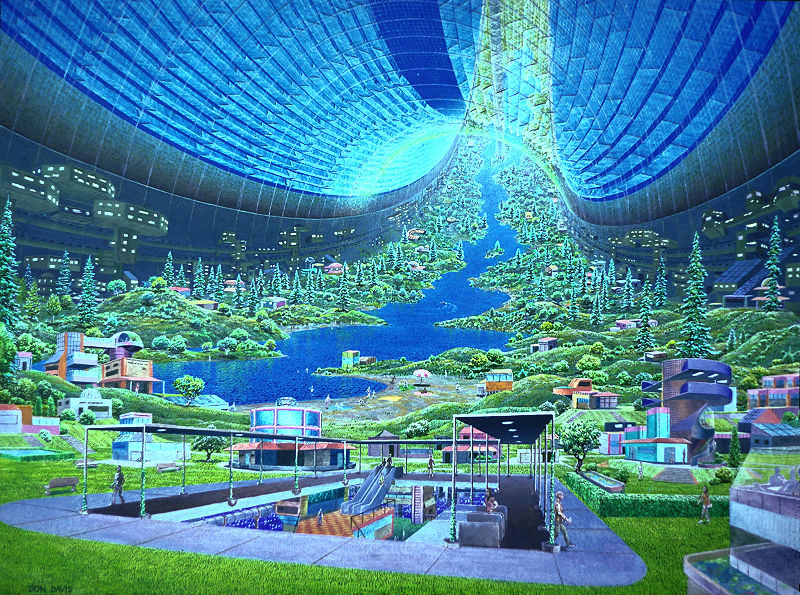In a previous article, I talked about how you can generate artificial gravity by accelerating at 9.8 meters per second squared. Do that and you pretty much hit the speed of light, then you decelerate at 1G and you’ve completed an epic journey while enjoying comfortable gravity on board at the same time. It’s a total win win.
What I didn’t mention how this acceleration messes up time for you and people who aren’t traveling with you. Here’s the good news. If you accelerate at that pace for years, you can travel across billions of light years within a human lifetime.
Here’s the bad news, while you might experience a few decades of travel, the rest of the Universe will experience billions of years. The Sun you left will have died out billions of years ago when you arrive at your destination.
Welcome to the mind bending implications of constantly accelerating relativistic spaceflight.
With many things in physics, we owe our understanding of relativistic travel to Einstein. Say it with me, “thanks Einstein.”

It works like this. The speed of light is always constant, no matter how fast you’re going. If I’m standing still and shine a flashlight, I see light speed away from me at 300,000 km/s. And if you’re traveling at 99% the speed of light and shine a flashlight, you’ll see light moving away at 300,000 km/s.
But from my perspective, standing still, you look as if you’re moving incredibly slowly. And from your nearly light-speed perspective, I also appear to be moving incredibly slowly – it’s all relative. Whatever it takes to make sure that light is always moving at, well, the speed of light.
This is time dilation, and you’re actually experiencing it all the time, when you drive in cars or fly in an airplane. The amount of time that elapses for you is different for other people depending on your velocity. That amount is so minute that you’ll never notice it, but if you’re traveling at close to the speed of light, the differences add up pretty quickly.
But it gets even more interesting than this. If you could somehow build a rocket capable of accelerating at 9.8 meters/second squared, and just went faster and faster, you’d hit the speed of light in about a year or so, but from your perspective, you could just keep on accelerating. And the longer you accelerate, the further you get, and the more time that the rest of the Universe experiences.
The really strange consequence, though, is that from your perspective, thanks to relativity, flight times are compressed.
I’m using the relativistic star ship calculator at convertalot.com. You should give it a try too.

For starters, let’s fly to the nearest star, 4.3 light-years away. I accelerate halfway at a nice comfortable 1G, then turn around and decelerate at 1G. It only felt like 3.5 years for me, but back on Earth, everyone experienced almost 6 years. At the fastest point, I was going about 95% the speed of light.
Let’s scale this up and travel to the center of the Milky Way, located about 28,000 light-years away. From my perspective, only 20 years have passed by. But back on Earth, 28,000 years have gone by. At the fastest point, I was going 99.9999998 the speed of light.
Let’s go further, how about to the Andromeda Galaxy, located 2.5 million light-years away. The trip only takes me 33 years to accelerate and decelerate, while Earth experienced 2.5 million years. See how this works?

I promised I’d blow your mind, and here it is. If you wanted to travel at a constant 1G acceleration and then deceleration to the very edge of the observable Universe. That’s a distance of 13.8 billion light-years away; you would only experience a total of 45 years. Of course, once you got there, you’d have a very different observable Universe, and billions of years of expansion and dark energy would have pushed the galaxies much further away from you.
Some galaxies will have fallen over the cosmic horizon, where no amount of time would ever let you reach them.
If you wanted to travel 100 trillion light years away, you could make the journey in 62 years. By the time you arrived, the Universe would be vastly different. Most of the stars would have died a long time ago, the Universe would be out of usable hydrogen. You would have have left a living thriving Universe trillions of years in the past. And you could never get back.
Our good friends over at Kurzgesagt covered a very similar topic, discussing the limits of humanity’s exploration of the Universe. It’s wonderful and you should watch it right now.
Of course, creating a spacecraft capable of constant 1G acceleration requires energies we can’t even imagine, and will probably never acquire. And even if you did it, the Universe you enjoy would be a distant memory. So don’t get too excited about fast forwarding yourself trillions of years into the future.



